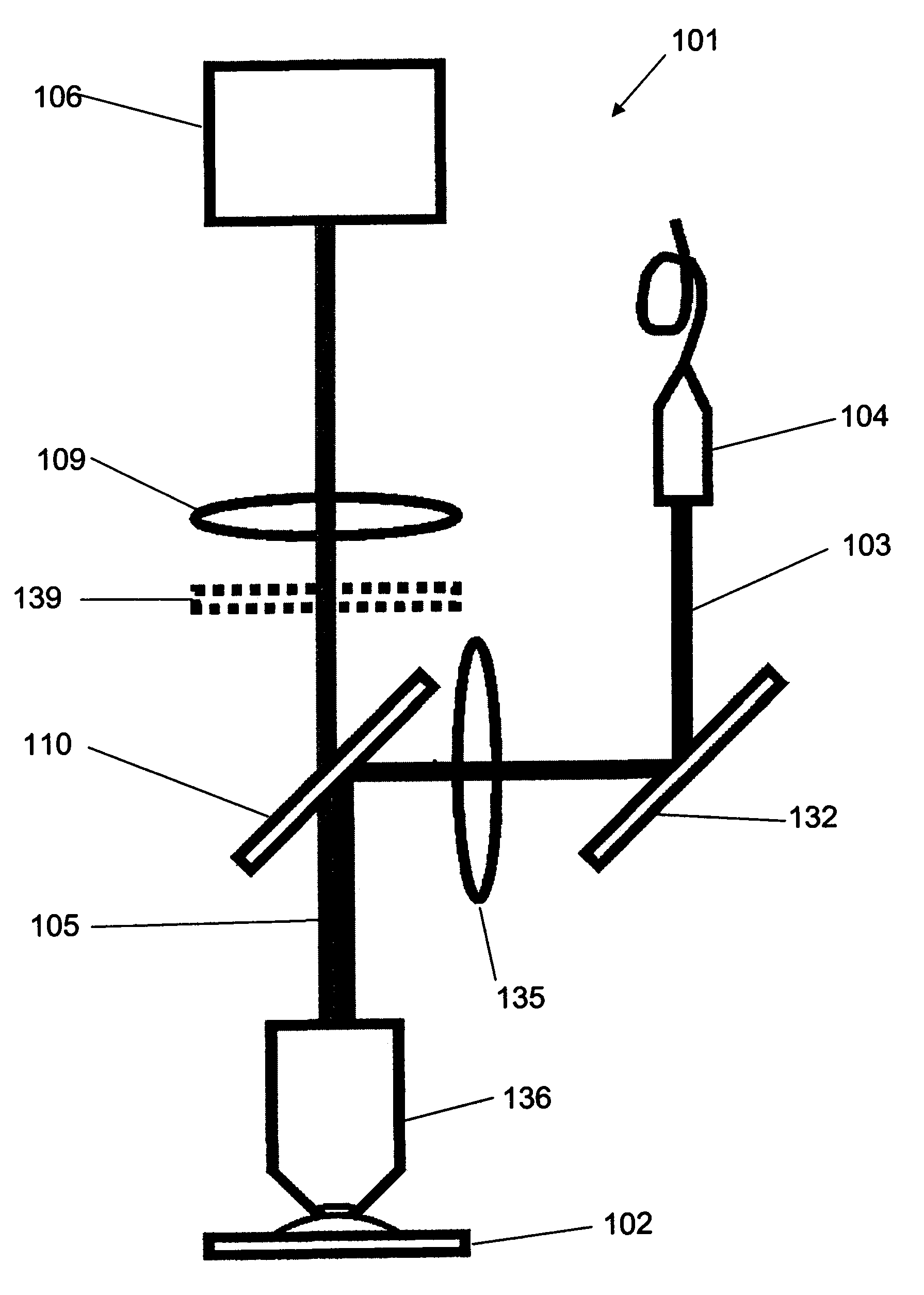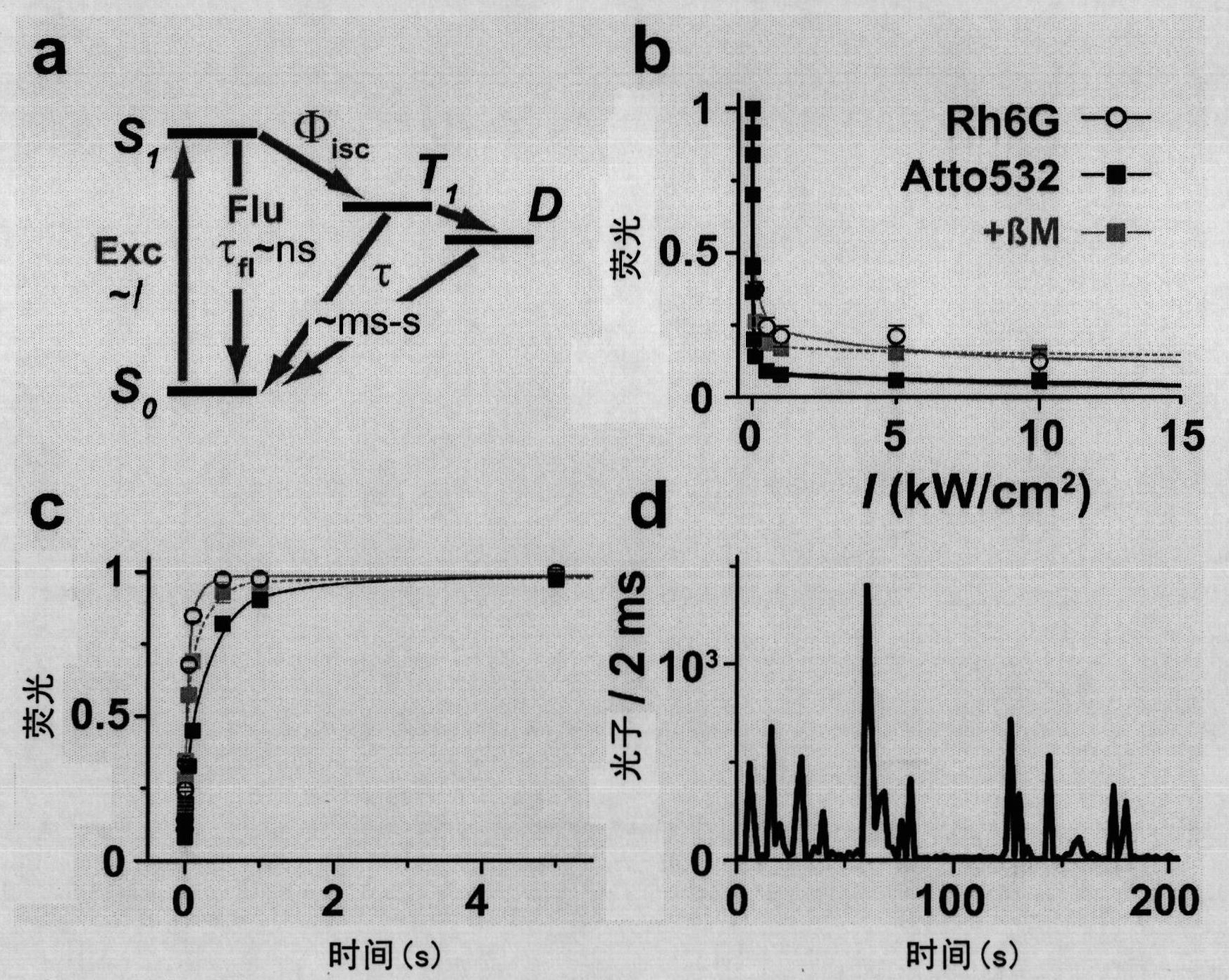High spatial resolution imaging of a structure of interest in a specimen
A technology with a structure of interest and spatial resolution, which can be used in the analysis of materials, material excitation analysis, material analysis by optical means, etc., and can solve the problem that fluorescent dyes cannot fluoresce.
- Summary
- Abstract
- Description
- Claims
- Application Information
AI Technical Summary
Problems solved by technology
Method used
Image
Examples
Embodiment Construction
[0035] Reference will now be made in more detail to the accompanying drawings. figure 1 A fluorescence microscope 101 is schematically illustrated. When performing high spatial resolution imaging of structures of interest in a sample 102 with a fluorescence microscope 101 according to the present invention, light 103 with one wavelength (black line) from a light source 104 is provided via a mirror 132, and the light 103 utilizes Lens 135 focuses into objective lens 136 . Light 103 is used for large area illumination of the entire region of interest in sample 102 . Fluorescence 105 (gray line) from a fluorochrome in the sample 102 is likewise collected by the objective, in this case the same objective 6, and separated from the light 103 by means of a dichroic mirror 110 and, if desired, by a suitable Fluorescence filter 139 further filters. In combination with objective lens 135 , lens 109 ensures proper imaging of fluorescent molecules of the fluorescent dye on sensor array...
PUM
 Login to View More
Login to View More Abstract
Description
Claims
Application Information
 Login to View More
Login to View More - R&D
- Intellectual Property
- Life Sciences
- Materials
- Tech Scout
- Unparalleled Data Quality
- Higher Quality Content
- 60% Fewer Hallucinations
Browse by: Latest US Patents, China's latest patents, Technical Efficacy Thesaurus, Application Domain, Technology Topic, Popular Technical Reports.
© 2025 PatSnap. All rights reserved.Legal|Privacy policy|Modern Slavery Act Transparency Statement|Sitemap|About US| Contact US: help@patsnap.com



